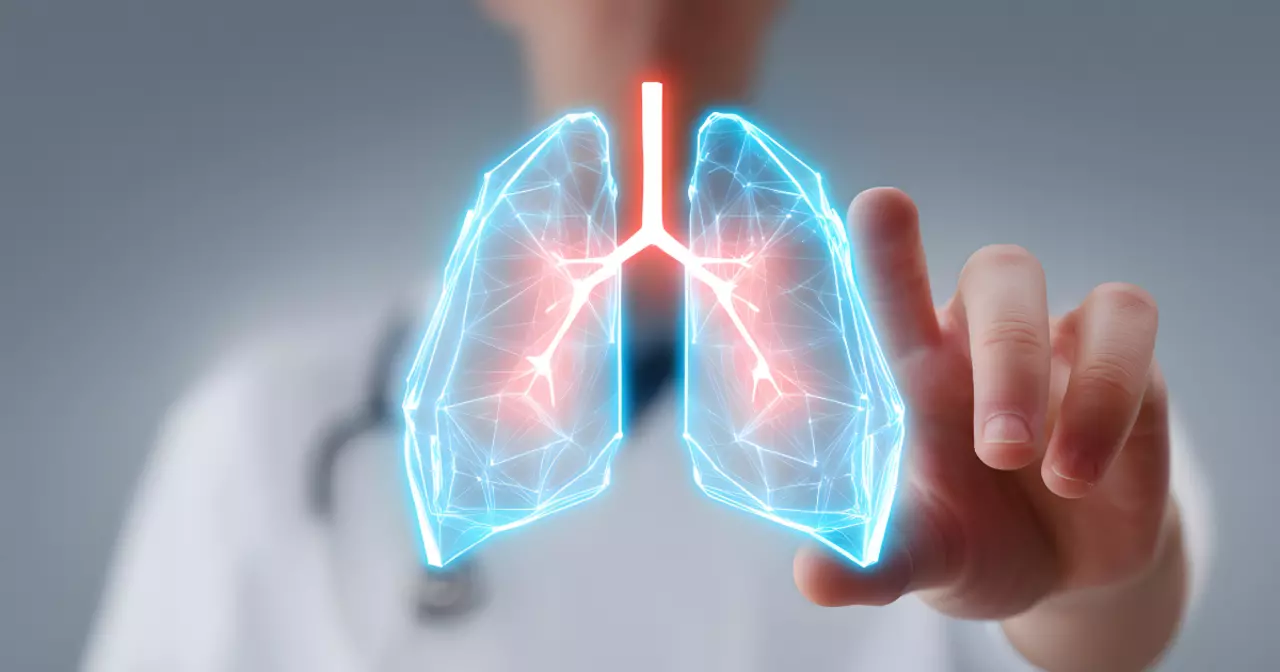BHD and Lung Cancer: New Family Case Reveals Rare FLCN Gene Mutation
28 Oct 2025
The patient
This medical case describes a 69-year-old man with Birt–Hogg–Dubé syndrome. He had lung cysts, a history of a collapsed lung, and was later diagnosed with advanced lung cancer. The same genetic change was found in his close relatives, who also had signs of BHD. This case shows why recognising BHD early matters for the whole family.
The patient went to hospital with a long-lasting cough. Scans showed many lung cysts and a 4 × 3 cm tumour in the left lung that had spread to other organs. He was diagnosed with advanced lung adenocarcinoma.
He had previously suffered a collapsed lung and had small neck and facial fibrofolliculomas. He had smoked for around 30 years but quit a year before diagnosis.
The family story
Doctors discovered that several of his brothers had collapsed lungs, while his son had lung cysts and tumours in both kidneys. This pattern of lung cysts, repeated pneumothorax, kidney tumours strongly suggested an inherited cause.
Genetic testing confirmed a mutation in the FLCN gene (c.295_311del, p.Asp99Ter) shared by the patient, his son, and his brother, confirming a familial case of BHD. This mutation had never been reported before, making it a new addition to the global database of known FLCN variants.
Does BHD cause lung cancer?
BHD is known to raise the risk of kidney tumours and causes lung cysts, but lung cancer in BHD is rare. The FLCN gene helps regulate a pathway in cells called mTOR, which acts like a growth control system. When FLCN is damaged, abnormal cell growth can occur.
To help researchers better understand these links, the BHD Foundation runs the BIRT International Patient Registry, a global database collecting information from people living with BHD. By registering, patients play an active role in advancing research, improving diagnosis and treatment, and shaping future clinical guidelines. The more people who join, the stronger and more meaningful the research becomes.
Treatment and complications
The man was treated with chemotherapy (pemetrexed), a blood-vessel-blocking drug (bevacizumab), and later immunotherapy (sintilimab). His cancer initially stabilised but treatment caused severe complications, including:
- Overactive thyroid (hyperthyroidism)
- Liver injury
- Bone-marrow suppression, leading to anaemia, infection, and bleeding risk
Despite adjustments and supportive care, he developed pneumonia and died in February 2025. This highlights the challenges of treating lung cancer in people with BHD, whose lungs may already be fragile due to cysts and prior collapses.
What patients and families can take from this
- Repeated unexplained collapsed lungs in a family are not random—ask about BHD
- Those small, harmless-looking bumps on the face or neck can be an early clue
- People with BHD should get regular kidney imaging (guidelines can be found here)
- Family testing matters: identifying one case can save others through early monitoring
- Avoid smoking—it adds further risk to already delicate lungs
Final note
This case reveals a newly discovered FLCN gene mutation passed through a family, showing classic BHD features of lung cysts, collapsed lung, kidney tumours and, in the father, lung cancer. It underlines why awareness, genetic testing, and family screening can be lifesaving.
Full citation
Feng J, Yu Y, Liu Y, Ding Y, Mu J, Jiang R, Sharma L and Jie Z (2025). A familial case of Birt–Hogg–Dubé syndrome complicated with lung cancer: a case report and literature review. Front. Med. 12:1581786. https://doi.org/10.3389/fmed.2025.1581786
